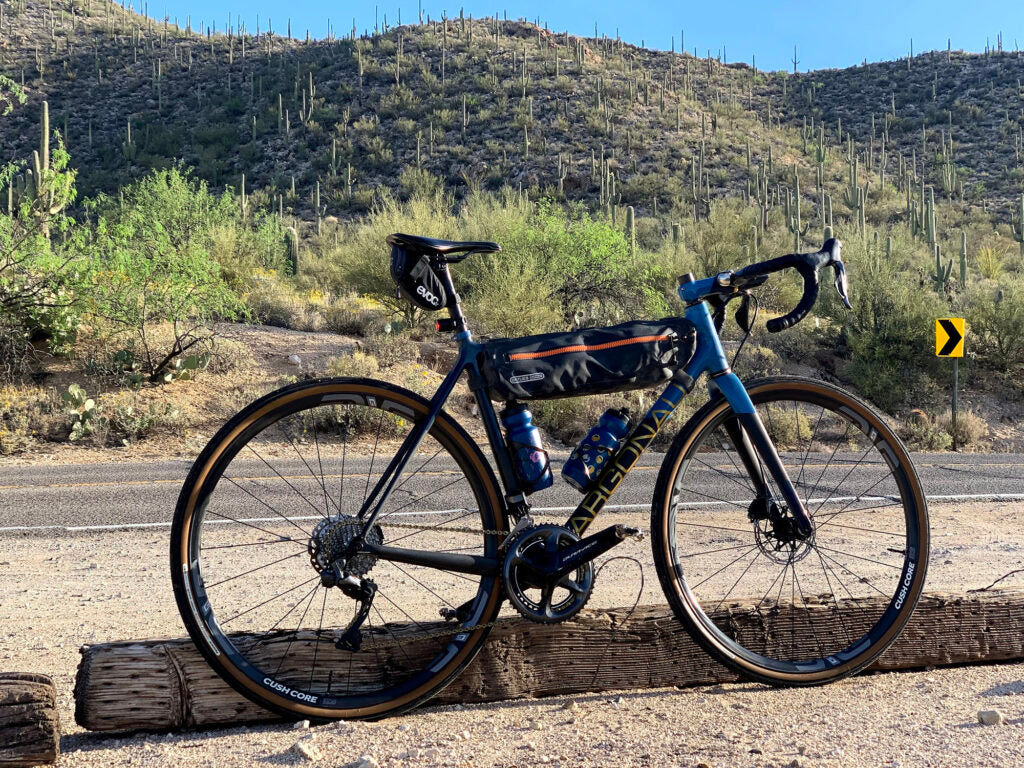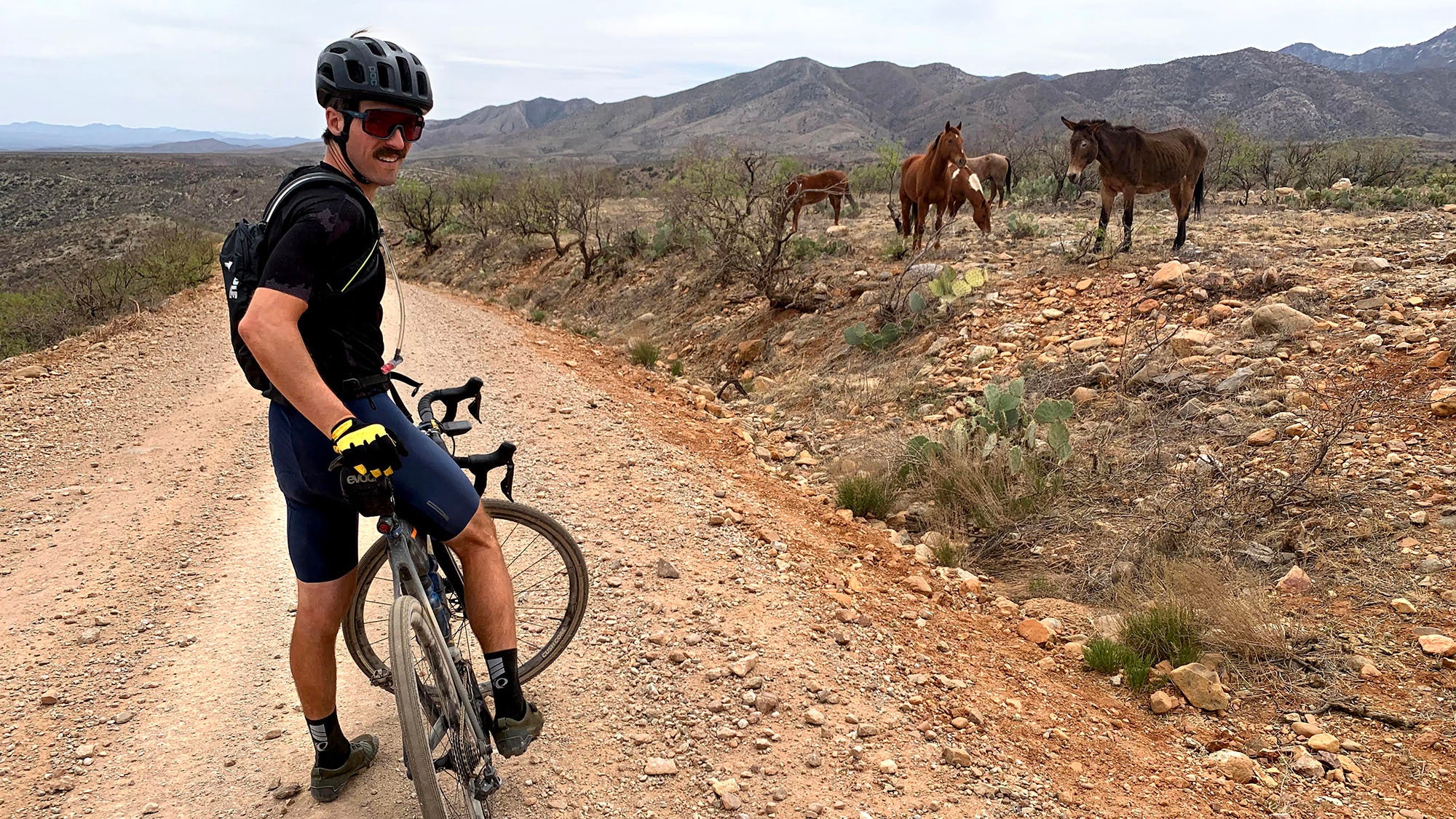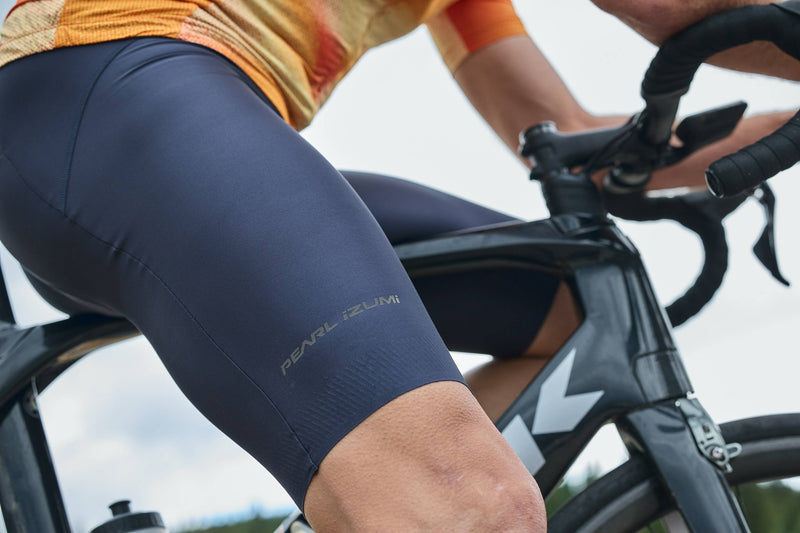As a seasoned cycling guide and professional racer, I’ve found that I’ve lost touch with many of the basics that hold many cyclists back from stretching their comfort zones and getting out and riding their bikes more. I’m finding some space in my life right now between busy guiding and racing periods to sit back and take inventory of what exactly those things are so that I can help more people get out and ride more often. I love cycling, and I, too, was once in a position where many of these unknown factors held me back. Hopefully, by breaking these basic elements down, I can inspire more people to get out and push their boundaries on a bike, improving the world one pedal stroke at a time.
First up is a question I get asked very often. What do I bring along for my 4-6 hour backcountry cycling adventure? This question is impossible to address without also bringing in the bag choice discussion. So I’ll answer it in two parts, beginning with common bag options.
There are four primary options for onboard luggage. There’s the super popular bar bag. I’ve got a few different size options from Ornot and love them both for convenience and look. But if I’m honest, I don’t ride them very often except on leisurely road rides, mostly due to their substantial adverse effect on handling. Extra floppy weight on the handlebars is a lot of extra work to steer around and manage. Instead, I prefer the three other primary onboard luggage options. The most basic, which most cyclists are already familiar with, is the saddlebag. This is the kind that straps to the underside of your saddle and the back of your seatpost for a sleek, discrete storage option for some essential pieces to any ride that you don’t need regular access to (hopefully). I use only this option whenever I can get away with it, which is generally any ride under 4 or 5 hours, so long as I have easy options for en-route refueling. If I don’t, or if the ride is much longer than that, I lean on the next option—the frame bag. I prefer a top tube frame bag, also called a half-frame, that still allows me to utilize my bottle cages. But if you have more storage needs, there are also frame bag options that fill your entire main triangle. These bags work as a storage compartment for bigger items and things that I still don’t access super regularly but need to bring along for emergency or backup supply. The next onboard option is a top-tube-based bag. These “fuel tank” bags are much smaller than the frame bag and not the most secure over rough surfaces but are incredibly convenient when you need easy access for constant refueling in races and such.

Beyond these, the only other luggage option I consider for my riding adventures is a backpack. A small pack with a tube is convenient for easy access to a larger hydration reservoir on your back. But they do have their drawbacks as well. Backpacks can be very uncomfortable, and even a well-designed pack can restrict airflow across your back and make you even hotter on a hot day. Not ideal, but the additional hydration capacity is often essential to making a long ride or race go smoothly. Hydration packs like these are often my last resort for onboard luggage, and I only use them for longer races or rides where there is no reliable access to groundwater or tap water along the way.
So now that I’ve explained my favorite luggage options, what do I keep in all these bags? That’s a favorite question of mine whenever I see a guest on one of my tours or a passerby on the trail with a lot of bags. Often, people’s answers to this question bring me a tremendous amount of delight. Some of my favorite answers include mustard packets (ostensibly for cramps), guns (yikes), and unexpected whole food snack options (a whole melon, for example).
But what do I keep in my bags? For a more extended, unsupported backcountry adventure, having the right backup/emergency supplies can literally make or break the experience for you. The basics are:
- Two or more tire levers, in case one breaks (I like the ones from Pedros)
- A good hand pump, wrapped with a roll of duct tape (I like this one from Lezyne, though it’s hard to pack without a frame back or backpack). CO2 is great, but it’s not reliable enough out in the backcountry.
- A sound plug system (I absolutely love the Dynaplug Racer Pro), though it won’t help you much without pairing it with a suitable sealant (I like Orange Seal). If you don’t ride tubeless yet, here’s why you should and how to set up and maintain that system. It rides better, it makes for less maintenance (fewer flats!), and it’s better for the environment (less tubes in the landfill).
- A solid multi-tool with chain breaker (I like the Crank Brothers M19) and a quick link for your specific chain
- Extra tube(s) and a good tire boot for more catastrophic tire failures (make sure the valve stem length will fit your rim depth)
- A small bottle of chain lube for mid-ride replenishing (not necessary, but super nice when your chain gets too gritty)
- Extra water or a filter for easy refilling if I have time for this luxury and a reliable groundwater source (I like the Katadyn BeFree)
- An extra layer or two for that pop-up storm at the top of the mountain
- Plenty of snacks and cash/card just in case
- A mask
- Basic first-aid supplies
- Extra sunscreen and Chapstick (and, when I’m in Montana, bear spray)
- Zip ties
- A spare derailleur hanger for my specific frame

Have I forgotten anything that you don’t leave home without? Feel free to make suggestions for addition in the comments below!
I look forward to bringing you more tips and tricks in the coming months to help you get out there more often and have more fun doing it in my ‘Side Country Essentials” column. Please feel free to suggest a topic. The best way to reach me is either on my Instagram profile @theopentrail or via email at caldwell541(at)gmail.com.







Comments